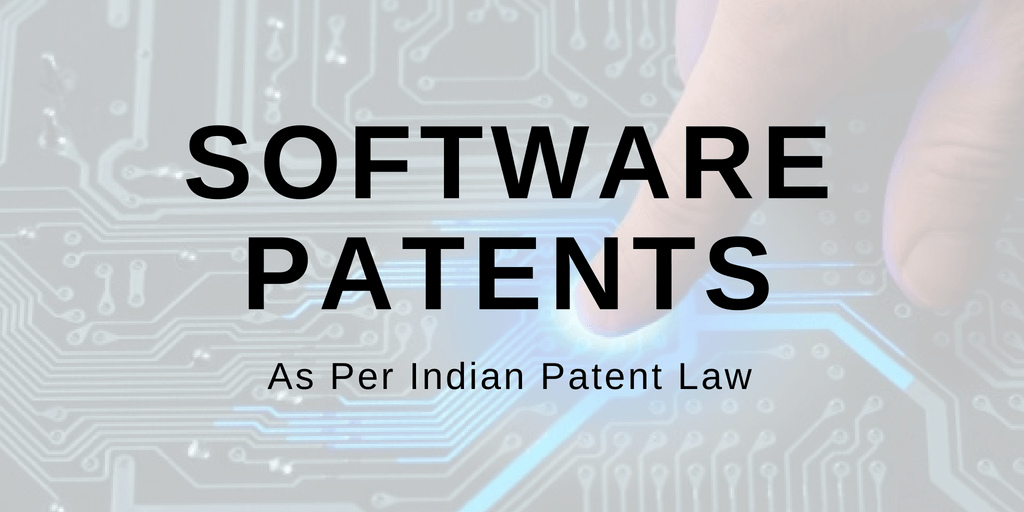The software is a non-patentable subject matter, as per the Indian Patent Law. There have been instances where things were different or exceptional. Big multinational companies were successful in scoring different patents in software, but not the smaller domestic ones. So what is the position of software patents under Indian Patent Law?
Also, read: Patent Registration in India: An All-Encompassing Guide

Indian Patent Law on Software Patents
According to the Patents Amendment Act (2002), the following are not patentable under Section 3 for Computer-Related Inventions (CRI):
- a mathematical or business method or a computer programme per se or algorithms;
- a literary, dramatic, musical or artistic work or any other aesthetic creation whatsoever including cinematographic works and television productions;
- a mere scheme or rule or process of performing mental act or method of playing a game;
- a presentation of information;
- a topography of integrated circuits;
As per the above guidelines for examination as propounded by the Patent Office, a computer programme cannot be patented. A software is a combination of computer programs. Thus according to the definition and also by the Patent Law, software can never secure a patent grant, as a single individual entity. However, on the contrary, some patent offices readily granted a patent to software whereas some offices opposed to it till 2015 as there was no equality in following the law among the offices. Though Business Methods were always non-patentable, still there are quite a few examples of Business Methods that were successful in getting the grant.
To know complete details about patents in India, read: How to file Patent in India- Requirements | Procedure | Specifications | Forms
Software Patents: Some Examples
Some business methods and software patents which successfully got the grant, are:
| Update distribution system architecture and method for distributing software | ||
| Preparing course content aligned with strategic goals and priorities of an organization | ||
| Method for enhancing ad features to increase competition in online advertising | ||
| Method for adding new software features to an application without modifying existing code |
The most debated and ambiguous term of Section 3(k) of the Patent Act is the term ‘per se’. The literal meaning of the word ‘per se’ is themselves. Thus, an isolated or individual software will not get a patent grant. One must combine software with any hardware to be patentable. Business Method continued to be non-patentable. It, however, didn’t solve the purpose and the Indian Patent Office amended the Computer-Related Inventions (CRI) guidelines both in 2016 and 2017.
Also Read: What Inventions Can Be Patented In India?
Software Patents: The ‘Three-Stage Test’
According to the recent June 2017, CRI guideline novel hardware is a mandate for software to obtain a patent. To determine patentability for software, consider the following ‘three-stage’ test (Section 3(k) of the Indian Patent Act,1970):
- Properly construe the claim and identify the actual contribution;
- If the contribution lies only in the mathematical method, business method or algorithm, deny the application;
- If the contribution lies in the field of a computer programme, check whether it is claimed in conjunction with novel hardware and proceed to other steps to determine patentability concerning the invention. The computer programme in itself is never patentable. If the contribution lies solely in the computer programme, deny the claim. If the contribution lies in both the computer programme as well as hardware, proceed to other steps of patentability.
The revised CRI guidelines will be helpful for patent practitioners as well as the patent applicant.
The purview of the Revised CRI Guidelines
The revised CRI guidelines being more strict does not allow an easy grant of a software patent. The most important points are as below:
- Under any condition software, ‘per se’ will not get a patent grant.
- A novel or new hardware is a must for a software patent. Under Regulation 5(3), the Examiner must confirm that the software is combined with new hardware. Only then it will be patentable. For example, under the old regulation, any new software when coupled with a device would be considered patentable. As per the new criteria, the device in question has to be novel simultaneously with software.
- Under Regulation 4.3, software must be industrially applicable.
- According to Regulation 4.4, the patent application for the software must contain detailed disclosure.
- The Regulation 4.4.4 requires the Examiner to concentrate only on the substance of the Claim rather than the form or type of it.
To know about us, visit our service page.
Also Read:
Indian Patent Office: July 2018 Top Updates
Patent Filing Precautions for Startups: Top 3
Here you can Download our FREE Help Guides:
- Procedure for Patent Registration in India (click here for download access)
- Patent Registration Fees in India (click here for download access)
 Click Here to Get Download Access (All Free Resources)
Click Here to Get Download Access (All Free Resources)
 Click Here to Download Access (A Case-study on Top 6 Challenges & Issues In Intellectual Property Rights (India))
Click Here to Download Access (A Case-study on Top 6 Challenges & Issues In Intellectual Property Rights (India))


